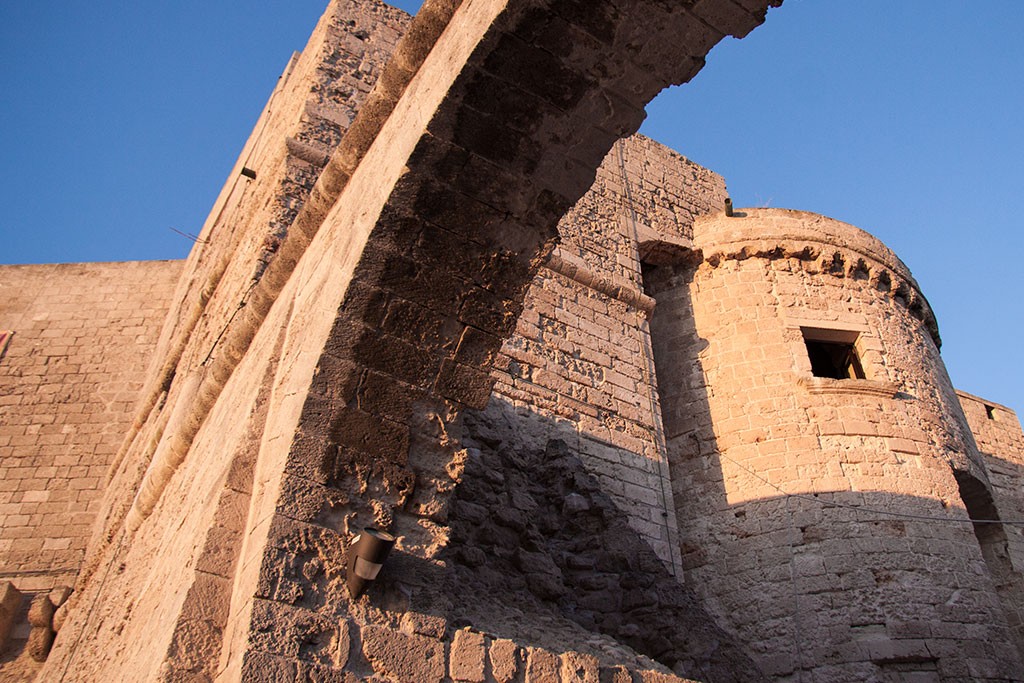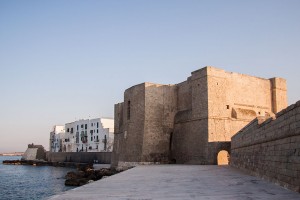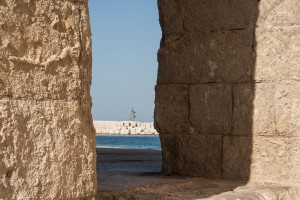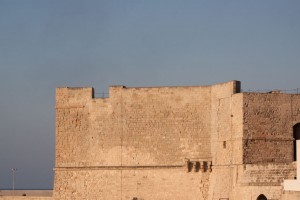It’s impossible to visit Monopoli without admiring its castle in the town’s historical centre. Of great architectural interest it was constructed in the 1500s on a promontory reaching into the sea, the fortress was part of the coastal fortifications decided by Charles V of Spain (followed by Don Pedro of Toledo).
The manor house, of which the early works finished in 1552, included a pre-existing Roman shaped round tower and the ancient underground church of St Nicola de Pinna (11th Century) so called because it was erected on the point “pinna” of the promontory. The castle’s structure is the typical pentagonal shape of the 15th Century Spanish fortresses with two main floors: the quay level and the parade ground level and further mid levels used for various storage. From one of the courtyard rooms it is possible to detect part of the surrounding walls dating back from the 1400s.
The interesting parade ground allows viewing of the sentry’s walkway which connects the look-out towers on the north-east and south-east corners. Outside the castle the cannons and their high embrasures can be seen. The building underwent re-structuring in 1660 to accommodate Spanish military and their families. Originally the building was the residence of the city’s highest ranking military personnel but in the last century it became a prison. Since the recent refurbishment in 1998 the castle is used as a conference and exhibition centre. On the quay level there is a large and welcoming “armoury” with many artifacts linked to the maritime traditions.




